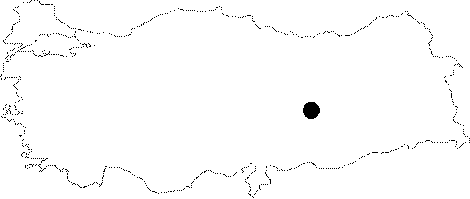|
©The Archaeological Settlements of Turkey - TAY Project
|
|
|
|
|
|
Ikiz Höyük |
|
|
For site maps and drawings please click on the picture...  |
For photographs please click on the photo...  |
|
Type:
|
Mound |
|
Altitude:
|
685 m |
|
Region:
|
Eastern Anatolia |
|
Province:
|
Malatya |
|
District:
|
Battalgazi |
|
Village:
|
Kulusagi |
|
Investigation Method:
|
Excavation |
|
Period:
|
Ceramic |
|
|
|
 |
|
| This site lies 25 km northeast of the city of Malatya; 750 m northwest of the town of Kulusagi; at the border of the Atatürk Dam Lake; near the old Meydancik village road. The site is affected by the changing water levels of the dam lake. As suggested by its name; Ikiz Höyük (twin mounds); the site is composed of two mounds which have been separated by a narrow passageway. It was discovered by the Degirmentepe excavation team in 1987 and excavated by U. Esin in 1989. It is assumed that lowest layer of the site; Layer 4; exposed in trench B dates to the end of the Neolithic Period and the beginning of the Early Chalcolithic Period. Pits in this layer yielded Dark Burnished Ware which shows close affinity with Amuq B ware. No architectural remains were found. |
| Location: The site lies 25 km northeast of Malatya; east-northeast of Battalgazi District; approximately 500 m northwest of Kulusagi Village; at the western side of the road leading to Meydancik Village; which is inundated today. |
| Geography and Environment: The mound is under water at times when the water level of Karakaya Dam increases; and emerges at other times forming a cape. Auscillation of the water level effects the mound. Therefore; it may be totally destroyed in the present. The finds of the settlement were on the terraces; formed by the river; in 1989. Dimensions are not exactly known. The cultural deposit of the mound is observed to be 1.5 m thick. The mound consists of two elevations; one at the south and the other at the north; separated by a defile. For this reason; it was named as "Ikiz Höyük" by Degirmentepe team. The mound is on top of a conglomerate; natural elevation. |
| History: |
| Research and Excavation: |
| Stratigraphy: |
| Small Finds: |
| Remains: |
| Interpretation and Dating: |